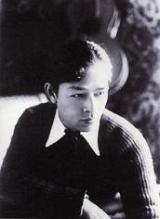
Japanese illustrator and shōjo manga artist. Matsumoto's 16-page The Mysterious Clover is recognized as a pioneering work in the field of manga, but he is best known for his shōjo manga Kurukuru Kurumi-chan.
His illustrations were popular from the 1930s through the 1950s, and he contributed illustrations to numerous popular girls' novels by some of the period's most famous authors, including Yasunari Kawabata and Nobuko Yoshiya. He was also a prolific illustrator of children's books and created merchandise for babies, small children, and girls.The Gallery Katsuji Matsumoto in Tokyo is managed by his surviving children.
Matsumoto was born in Kobe, the son of Toraji and Ishi Matsumoto, but moved with his family to Tokyo at the age of eight. At the age of 13, he began attending what was then called Rikkyō (St. Paul's) Middle School. Through the introduction of a teacher at Rikkyō, Matsumoto began drawing illustrations for the magazine Shinseinen at the age of 17. Matsumoto withdrew from Rikkyō at the age of 18 and began attending the Kawabata ga gakkō. During this time he contributed drawings to such magazines as Shōjo sekai and Shōnen sekai. It was during this period that Matsumoto was inspired by illustrator Kōji Fukiya to become an illustrator in the field of girls' media. would eventually marry Fukiya. Following the devastation of Tokyo, including its publishing industry, in the 1923 Great Kantō earthquake, Matsumoto decided to try his fortunes overseas, and managed to obtain free passage to Shanghai. His hope was to eventually make his way to Paris. In Shanghai, he earned money by contributing illustrations and articles to the Shanghai Daily Newspaper, but when he turned twenty years of age, he was forced to return to Japan to report for the draft. He was rejected for military service because he was flat footed.
Matsumoto's first forum for steady work was the magazine Shōjo Gahō, to which he contributed from 1928 to 1938. Matsumoto first ventured into manga in Shōjo Gahō, creating a series of illustrated narratives featuring a lively Chinese girl named Poku-chan, which was irregularly published between November 1930 and March 1934. The Poku-chan strips were drawn in a stylized, almost abstract, Art Deco manner. Matsumoto could draw in a wide range of styles, from the realistic to the near-abstract, but all of his work was distinguished by clean, almost geometrical lines and a strictly Modern sensibility. While he illustrated numerous dramatic girls' novels, his style was better suited to sunny, playful, or humorous work. In 1935, Matsumoto began to work for the magazine that would become his primary forum, Shōjo no tomo. Shōjo no tomo, with its modern, stylish image, was the ideal magazine for Matsumoto. In 1932, at the age of 28, Matsumoto was wed to Ayako Nimori. They went on to have seven children (four boys, three girls) together. Because Ayako was an only child, the decision was made to have the firstborn male child legally adopted by her parents in order to carry on the Nimori name. On official records, therefore, Ki Nimori is listed as the younger brother of Ayako, and therefore the brother-in-law of Matsumoto.




